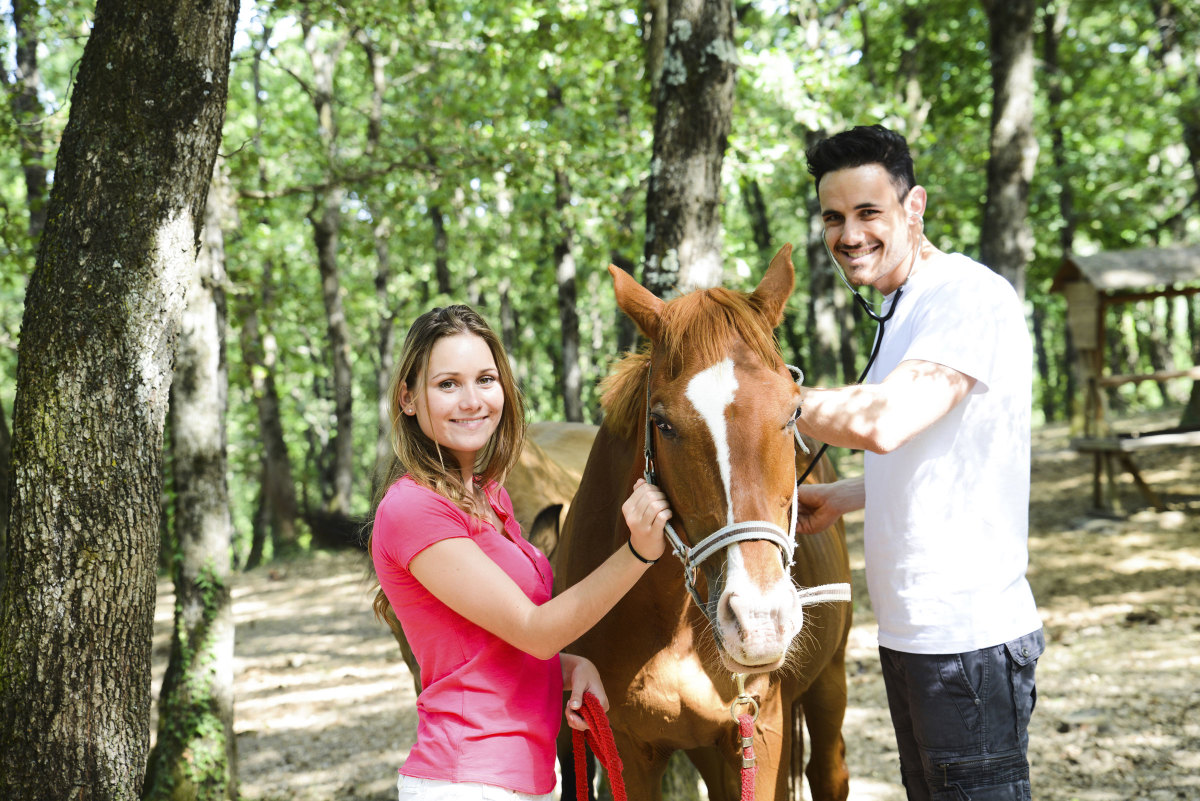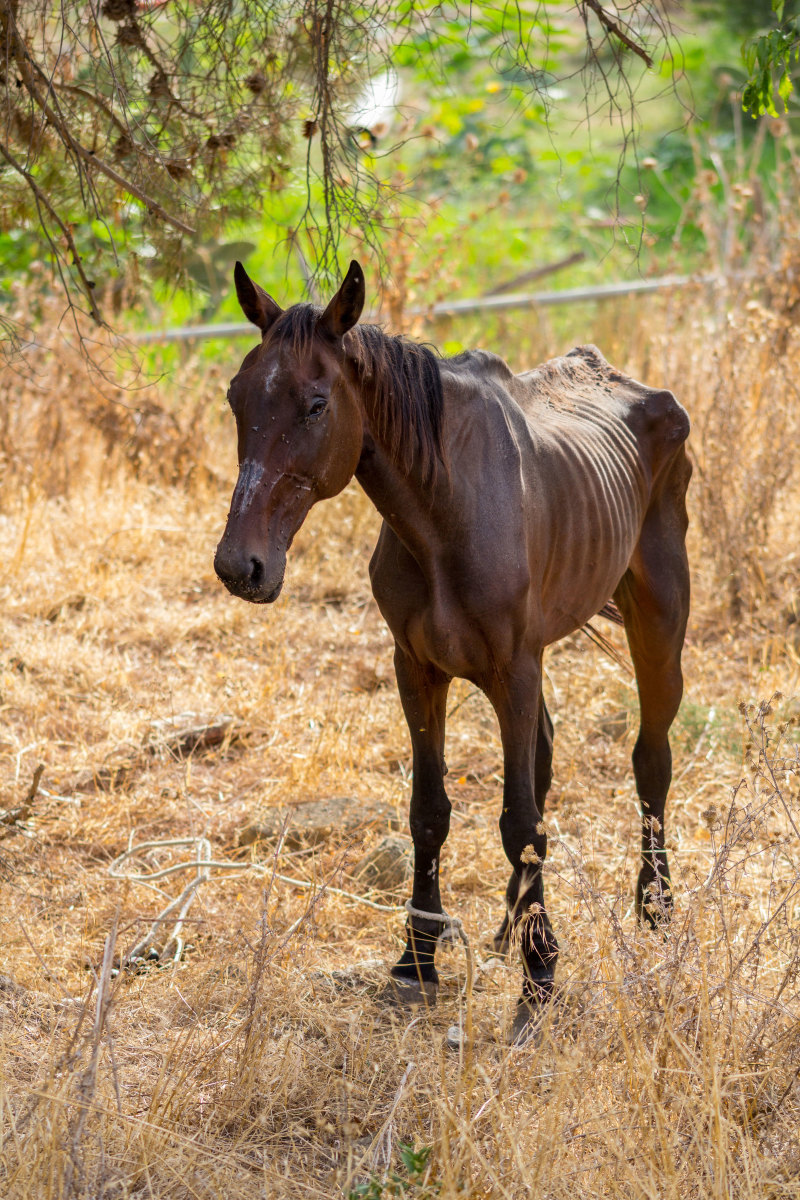
The majority of veterinary practices serve a broad range of clientele, varying from recreational riders to competitive equestrians of all levels and disciplines. The goal is to deliver routine care that keeps the horses sound and healthy, regardless of each individual animal’s “job.”
While this might be the case for the majority of horses under your care, it’s more than likely that your assistance will be requested to nurse or nurture a rescued horse back to health.
Rescued horses come from diverse environments where they have encountered neglect, starvation and/or abuse, with many possible stages in between. Because rescued horses have such different backgrounds, veterinarians have to be prepared to provide guidance to owners, prevent the spread of disease, address immediate medical needs, determine who is financially responsible and provide evidence as necessary in legal cases.

To help vets better work with rescued horses and their owners, Nicole Eller, DVM, a Minnesota-based field veterinarian for the ASPCA, and Julia H. Wilson, DVM, DACVIM, owner of Turner Wilson Equine Consulting and president of Equitarian Initiative, offer their expertise.
Pre-Visit Interview
Before arriving for the first visit, ask what background information is available on the horse and find out how the owner or rescue group acquired the horse. Was it purchased from a livestock auction? Was it first adopted through the Bureau of Land Management (BLM)? Was it abandoned or abused?
Rescued horses might be feral, fearful, defensive or even aggressive. Knowing about the environment from which the horse came can provide perspective on how easy or difficult the horse might be to work with. In many cases, rescued horses have not been handled, or they have not been handled well.
“I have dealt with horses who were handled so poorly that they would come at you striking and biting in an attempt to protect themselves,” said Eller.
Use the information collected in a pre-visit interview to determine whether additional assistance is needed. Request that the owner or rescue organization provide another skilled handler or two if the horse is difficult to catch or handle.
Scheduling extra time for the first visit benefits the horse and owner. “Planning more time for the appointment promotes patient handling and provides for important discussions with the owner,” Wilson said.
Also, ask about the facilities available in which to handle the horse. “A sturdy stall is good,” Eller advised. Often she leaves a halter and lead on the horse, but she first checks to confirm that the stall is free of hazards. A broom handle or similar object comes in handy for reaching the lead rope and catching a hard-to-handle horse.
Prior Medical Care
“Ask the new owner to gather as much prior history as possible and any medical records that might be available from the rescue or organization that previously had the horse,” Wilson advised. Access to prior medical care offers insight into injuries or treatments that might prove useful in caring for the horse.
Before the horse arrives on the property, encourage the owner or rescue group to ensure that the horse has a recent negative Coggins. “Then, upon arrival, the horse should be quarantined for a minimum of two weeks and good biosecurity measures should be used,” Eller said.
As soon as the horse arrives, a veterinary visit should be scheduled to address immediate health issues and to establish a plan for routine care, such as vaccination and deworming.
During the first visit, Eller suggested starting with a body condition score (BCS). This will determine which issues should be treated first. Depending on the BCS, it might mean that the horse needs dental work before other preventative care can be provided. In other situations, it might mean delaying a procedure such as castration or spacing out vaccinations to give the animal time to gain weight and improve its overall health.
If the horse has to be sedated for an exam or a procedure, it’s a good time to bring in a farrier. “It can be advantageous to have the farrier work on the hooves while the horse is sedated,” Wilson said.
A good physical exam can also reveal underlying conditions. “The reproductive status should be checked during an exam. Even the thinnest mares can be pregnant,” Wilson stressed.
Rescued horses are commonly afflicted with ectoparasites and endoparasites. “Deworming can be a challenge in these horses; base your decisions on fecal egg counts (FEC) and clinical judgment,” Eller said. “Diagnostically, I always recommend FEC and baseline bloodwork.”
The initial visit is an ideal time to discuss a feeding schedule and long-term prognosis with the horse owner.
“Be sure to have a discussion about feeding an emaciated horse and about re-feeding syndrome, especially if the horse is extremely debilitated,” she added. “Don’t be afraid to address quality-of-life issues, if warranted.”
The first visit might also be an opportunity to recommend a companion animal to correct behavior issues and reduce anxiety. “A friendly horse, donkey or goat can help minimize the social stress of the situation,” Wilson said.
A lot of well-meaning people set themselves up for heartache when attempting to rescue a horse that might have more issues than they—or anyone—can handle or afford. This scenario means that the vet has to initiate a quality-of-life discussion with an owner who is having difficulty making a decision.
“I have dealt with many unofficial ‘rescues’ who try to save everything, including horses with debilitating conditions, fractures, etc.,” Eller said. “A frank discussion with these people is necessary to prevent unnecessary suffering, and sometimes this is all it takes.”
Finances and Legal Considerations
Equine medical care is expensive, especially when the horse hasn’t received routine care and requires extra attention and rehabilitation. “I have taken in many rescue horses personally, and anything I need to do medically with those animals is financially my decision,” Eller said.
Bills can pile up quickly, and vets can’t afford to be left holding the bill. After the initial assessment, provide an estimate of additional care. If the client has a proven credit history, consider offering payment options to allow the client to pay the bills over time.
“Costs of veterinary services are always an issue and should be addressed realistically,” Wilson noted.
A well-run, established rescue group has a keen awareness of what is financially feasible and can be realistic about euthanasia services. Wilson noted that experienced rescue groups also know that elective procedures, such as removing a skin mass, might have to wait.
When working with an individual owner or a rescue organization, it is clear who is paying the bill. But there might be situations where a veterinarian is asked to assist a rescue organization or law enforcement in a legal case.
“You will need to determine up front who is responsible for the costs of diagnostics, treatment, emergency care, etc.,” Eller said. “You’ll also need to determine what they are looking for as far as evidence required for a criminal case.”
Veterinarians providing expertise in criminal neglect or cruelty cases are required to conduct a thorough exam of the horses and document the findings with both written medical notes and identifying photographs.
“A typical forensic examination includes a photo board with an individual animal identification number, photos of all sides of the animal, and overall orientation and close-up photos of any lesions,” she explained.
Wilson added, “All evidence of neglect and cruelty must be documented. Forms are available from the ASCPA.”
The Flip Side
The assumption is that you’ll be called in to help an owner or an organization rehabilitate a rescued horse and nurse it back to health. But what is your responsibility to discuss a horse’s condition with an owner who sees nothing wrong?
Often in these cases, horse owner education is all that is required. When an owner is willing to do this, it is a good place to start. “
Give them written recommendations, and set up a recheck in 14 or 30 days,” Eller said.
Then, if the issue has not been addressed in the follow-up visit, tell them you will get law enforcement involved. “Don’t be afraid of losing business,” she said. “Most of your clients will appreciate that you are willing to go that extra step to protect an animal.”
State statutes regarding animal cruelty vary; each state’s definition of animal cruelty differs. Each state will have requirements for veterinary reporting of animal cruelty and the protection afforded to vets who report cruelty in good faith.
Legally, animal maltreatment can range from neglect and lack of veterinary attention, food and water, to deliberate abuse.
“It’s important to know what the definitions of these are in your state,” she emphasized.
If the owner is unwilling to discuss a problem with the vet, a call should be made to the local humane officer, sheriff’s department or police department to send someone to inspect the property and animal(s).
Take-Home Message
By definition, veterinarians are healers, committed to the well-being of horses from all breeding backgrounds and levels of performance. In addition to providing regular maintenance care for clients equally dedicated to caring for their horses, veterinarians can be faced with treating a rescued horse.
Rescued horses bring a wide range of health and behavioral challenges that can test a vet’s technical and inter-personal skills. Even more than with well-cared-for horses, rescued horses need to be treated on an individual basis, allowing for time in between procedures for especially emaciated horses to recover slowly.
One point to consider is that rescue organizations have different contracts and might not actually sell a rescued animal to a new owner. “Many adoption contracts have language that may impact treatment decisions. Some do not allow euthanasia without the rescue’s approval,” Wilson noted.
Others require that the animal be returned to the rescue group if the new owner is unable to care for it. “Potentially serious medical issues may involve a three-way conversation to find the right plan for the rescued horse,” Wilson added.
At the end of the day, caring for rescued horses and supporting their owners is more than building a clientele; it’s about doing what’s right for the horse. “We all took an oath, and we need to remember that our first obligation is to the animal, to do what we can to prevent suffering,” Eller said.








